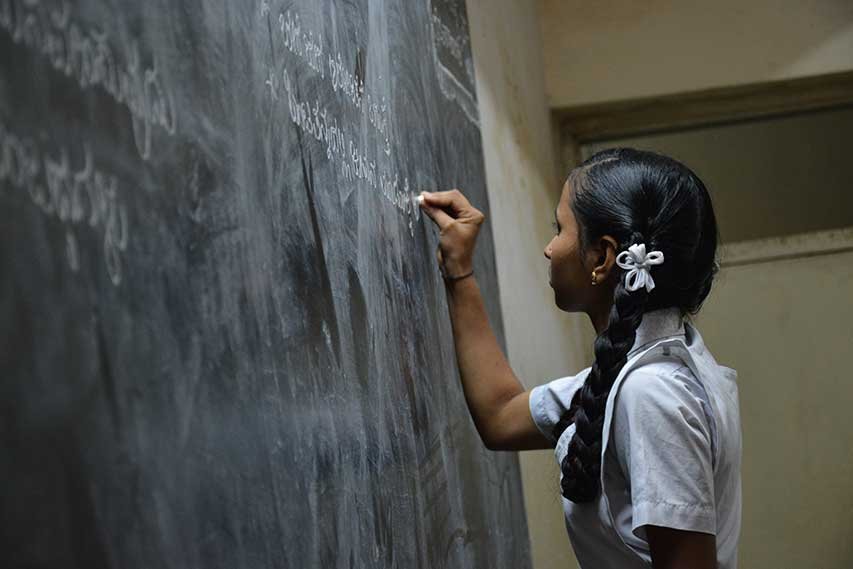
In the age of smart phones, internet, same sex marriages and globalization, menstruation is still a taboo is many parts of India and the world. Be it a village, city, town or an upscale posh community, this natural phenomenon is often discussed in hushed tones.
‘Don’t wear white!’
‘Menstruation is a disease!’
‘Are you crazy? You’re not supposed to tell the boys!’
‘Stay away from the kitchen. The pickles will go bad if you touch them, while you’re still on your period!’
These are some of the many statements that girls are often subject to during adolescence and beyond. Moreover, mothers, aunts, sisters and even teachers often fail to educate adolescents on menstruation, its causes and the basic hygiene and care that ought to be availed. As a result of this lack of knowledge or rather ignorance, there runs a deeply entrenched ‘ecosystem of shame’ all across. Schools too fail to provide an infrastructure that supports Menstrual Hygiene Management (MHM). In cases where ideal MHM is absent, girls are left to miss classes or be subject to embarrassment and severe anxiety. Without means to manage their monthly periods, we have seen girls we work with, being ‘forced to stay at home from school rather than ‘risk’ being shamed.’ Girls who drop out marry earlier, earn less and are at a much greater risk of developing HIV, or dying from childbirth complications. The UN estimates that girls miss up to 20% off their school time because of their periods. So deep is the culture of shame, that it is still passed down through generations upon generations.
Involving men in #PeriodTalk
To illustrate what our girls often narrate as one of the everyday incident in schools, we have heard cases, where male school teachers, as old as 28-30 year old men, have no idea why month on month, truckloads of supplies of sanitary napkins come to government schools and for what use! Most of them often end up using the sanitary pads as blackboard dusters! Before you laugh at this, take a moment, correct yourself, because this very culture of deep-seated ignorance is making it difficult for our daughters to openly talk about menstruation. In a recently held global tweetchat, Protsahan discussed that, ‘Why isn’t adolescence and puberty ‘discussed’ in schools/ NGOs in India? Why are they still considered taboo topics?’ “A pervading sense of shame and ‘cultural’ silence around issues of sexual and reproductive health leads to them not being discussed by schools in India. These same cultural and traditional norms also leave healthcare providers and educators underprepared to deal with these issues.” Says, Vandita Morarka, Founder, One Future Collective. She goes on to add, “Unfortunately, the quality of information provided to girls here in India is extremely sub par. I remember, in school we were just hurriedly shown some diagrams of the human body and given one sanitary napkin to hide in our notebooks and take back to class, that was it about conversation on periods!” But would you say that this has something to do with patriarchy at some level? “Definitely. Female bodies and processes are not given their due. Anything men are uncomfortable with, women are expected to hide. Over decades such behavior gets internalised for women.” She says with a sigh. The entire twitter chat can be accessed here: http://wke.lt/w/s/cqvjK
Here's the 1st question for the evening.
Q1. Why isn’t adolescence and puberty ‘discussed’ in schools/ NGOs in India? Why are they still considered taboo topics? #PeriodTalk #NoMoreLimits #MHDay2018 pic.twitter.com/nCeaI7IKWf— Protsahan India Foundation (@NGOProtsahan) May 22, 2018
These are the existing programs from the government, but so much more needs to be done because 84% of adolescent girls in the national capital Delhi still use cloth during their periods#NoMoreLimits #MHDay2018 #PeriodTalk pic.twitter.com/pKTI5jEZsX
— Protsahan India Foundation (@NGOProtsahan) May 22, 2018
Time to change perceptions and infrastructure
Unavailability of sanitary napkins, no provision in case of staining and buckets of unclean water are some of the gruesome realities that female students and staff have to face in many of the country’s schools. One of the girls we work with, Maanti (name changed), 15-year-old actually developed a urinary tract infection (UTI) when she used the water from a bucket in her school washroom, to wash herself after defecating. So yes, there are toilets, but they also have water that give the adolescent girls UTI’s. That is the state of affairs in 2018 we’re talking about.
Worse still, advertisements for sanitary napkins still have ‘blue colored blood’ drops. Sorry folks, we bleed red, not blue. Grow over and beyond cricket, the nation doesn’t bleed blue, it bleeds red. We’ve seen at our center in Uttam Nagar that when we talk ‘with the girls’ instead of ‘teaching them’ the menstruation dialogue with them makes it easier to convey the message without getting lost in translation. There are questions, and every question is respectfully answered. We begin conversations with impactful cinema, like Akshay Kumar’s “Padman”, then go on to supplement conversations with community theater, Menstrupedia comic books, Mythri animation video, conduct role plays and allow them the space for open conversations. It’s not a hushed topic to be discussed and gotten over in an hour, but takes us at least 96 hours across the year to drill the sustained change in mindsets. It works. Uninhibited conversations work.

To offer dignity to each human, regardless of his or her gender, a school should provide separate toilets for girls, boys and ideally for female and male teachers as well. Certain facilities that one must install include clean water supply, availability of soap for thorough washing of hands, a space for washing laundering menstrual absorbents and facility to safely dispose used menstrual absorbents. Specific details such as providing a ‘clean’ mug to allow dispensing of water, well-positioned mirrors to check for stains on clothes, hooks or niches to keep clothing and menstrual absorbents dry, as well as a convenient space for changing clothes, should be looked after too. Another crucial aspect to keep in mind is the location of the toilet or sanitation block; they should be in adequate places that are well covered, this is essential to assure safety and privacy of girl student. Furthermore, the school management ought to construct 1 toilet for every 40 girls or 1 urinal for every 20 boys. Care should also be taken to provide sufficient supply of water, ideally having a 500 litres water storage capacity for 100 children, if not more. Apart from facilities within the toilet, the school’s teachers should be approachable enough to talk about menstruation, and if a girl urgently needs sanitary napkins, they should be provided by the school and not have them be used as blackboard dusters!
Menstrual Hygiene Day: Turning symbolism to everyday reality
Menstruation is nature’s gift that makes creation itself a reality. If individuals shy away from such topics they only foster chaos and confusion. When we educate our children on female hygiene, menstruation and associated topics, we will only engage in shaping well-informed, vigilant and confident adults. India envisions to develop economically, even transform into a superpower! However, unless we work to tackle problems at the grass root level, development would merely be based on feeble foundations.
May 28, has symbolic meaning too. May is the 5th month of the year and women menstruate an average of 5 days every month. Also, the menstrual cycle averages 28 days. Therefore, on this Menstrual Hygiene Day, 28th May 2018, let us become beacons of light that educate all stakeholders around us about Menstrual Hygiene Management for this is an issue that directly affects our daughters’ health, education and dignity. Access to information is a human right. Let not our daughters be devoid of it.
By: Sonal Kapoor, Founder-CEO, Protsahan India Foundation





